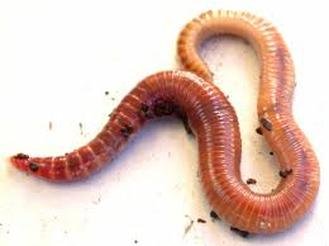
Let’s take a closer look at the range and distribution of red wigglers worldwide. Understanding where these little guys thrive and how they spread can give us insight into their importance in various ecosystems and even in our homes. So grab a cup of coffee, and let’s dive into the underground world of red wigglers!
What Are Red Wigglers?
Red wigglers, scientifically known as *Eisenia fetida*, are a type of earthworm that’s especially popular for composting. What makes them unique is their ability to thrive in decaying organic matter, like kitchen scraps and yard waste. Their reddish-brown color and thin body make them easily recognizable. You might think of them as the little superheroes of composting!
These worms can consume their weight in food daily. That means if you had a thousand of them, they could munch through around half a pound of waste every day! This ability not only helps reduce landfill waste but also produces nutrient-rich castings that improve soil health. So, if you’re thinking about starting a composting project, red wigglers are your go-to worm companions.
Native Range of Red Wigglers
Red wigglers are originally native to Europe but have made their way across the globe. They prefer moist environments, often found in leaf litter, compost piles, and rich soil. Their adaptability is remarkable. You’ll find them thriving in gardens, farms, and even in urban settings.
In the United States, red wigglers have been widely introduced and are often used in home composting systems. They can survive in a variety of climates, from the temperate zones of the Northeast to the warmer Southern states. Their distribution continues to expand as more people embrace sustainable practices like composting, turning their yards into micro-habitats for these worms.
Global Distribution and Habitats
When we talk about the global distribution of red wigglers, it’s fascinating to see how they’ve spread across continents. They are now found in places like North America, South America, Australia, and Asia. Their ability to adapt to different environments plays a huge role in their widespread presence.
In tropical climates, you’ll typically find these worms in rich, organic soils. They thrive in warm, moist conditions, making areas with abundant vegetation ideal habitats. In temperate regions, they can be found in gardens and farms, where human activity helps create perfect environments for them to flourish.
Red Wigglers in Composting Systems
The popularity of red wigglers has soared, especially in the gardening and composting communities. They’re used in commercial and home composting systems alike. Their role in breaking down organic matter is vital. As they feed on waste, they produce compost that’s rich in nutrients like nitrogen, phosphorus, and potassium.
Because of their efficiency in composting, many urban gardeners have taken to keeping red wigglers in small bins, often in their kitchens or basements. This practice not only reduces waste but also creates a sustainable cycle of nutrient creation. If you’re looking to start your compost journey, red wigglers are a fantastic choice for your indoor composting system.
How to Care for Red Wigglers
If you’re lucky enough to have red wigglers in your garden or compost bin, it’s essential to know how to care for them properly. They thrive in conditions that are just right. Here are some tips:
- Moisture: Red wigglers prefer damp environments. Make sure the bedding is moist but not soaking wet, like a wrung-out sponge.
- Temperature: Keep them in a temperature range of about 55°F to 77°F (13°C to 25°C). Extreme temperatures can be harmful.
- Feeding: Feed them kitchen scraps, but steer clear of citrus fruits, meat, and dairy to avoid odors and pests.
Keeping an eye on their environment ensures these little worms stay happy and healthy, ready to break down waste efficiently.
The Role of Red Wigglers in Ecosystems
Now that we’ve covered their habitat and care, it’s crucial to understand the role of red wigglers in the environment. Their activities greatly enhance soil health. When red wigglers consume organic matter, they help aerate the soil, allowing plants to grow better. Their castings improve soil structure and nutrient content, making it easier for roots to access essential elements.
Additionally, their burrowing helps water penetrate the soil more deeply, which can benefit plant life during dry spells. It’s like having a natural irrigation system working underground! So, when you see these worms, remember they’re not just squiggly creatures; they’re nurturing the earth.
Future of Red Wigglers
The future of red wigglers looks promising, especially with the growing focus on sustainability. As more people become aware of the benefits of composting, the demand for red wigglers is likely to increase. They serve as an essential part of a healthy ecosystem and continue to play a vital role in waste reduction efforts.
As urban gardening grows in popularity, these little worms will likely become even more vital in our efforts to create sustainable living environments. Imagine a world where composting is the norm, making red wigglers household names!
In conclusion, understanding the range and distribution of red wigglers worldwide opens up a larger conversation about sustainability and environmental health. They are not just a helpful tool for gardeners but a key player in maintaining the balance in our ecosystems. Whether you’re composting in a tiny apartment or managing a large garden, red wigglers can help transform waste into rich nutrients for the soil. So, if you’re thinking about getting into composting, why not give red wigglers a try? You’ll be helping the planet, one worm at a time!
